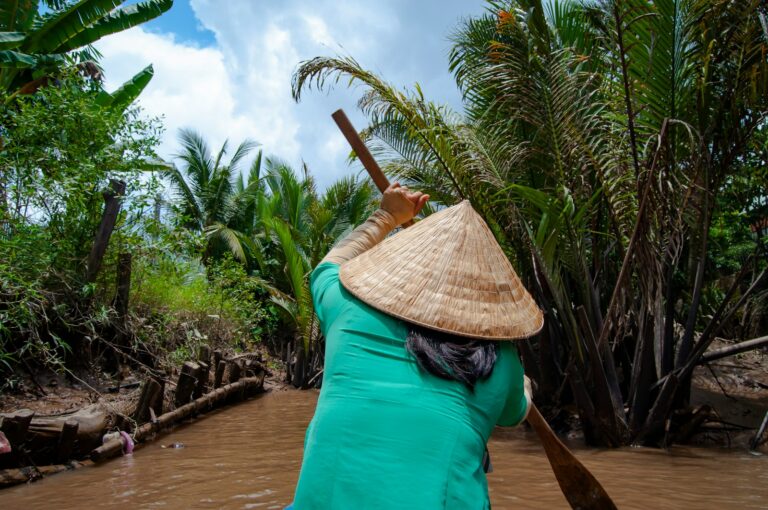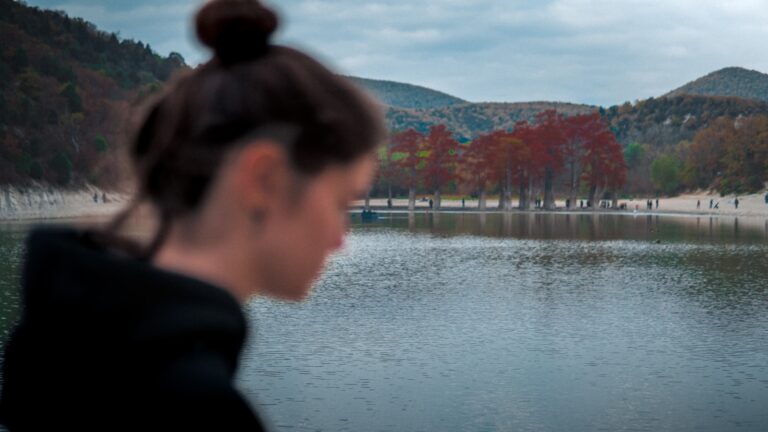Nice Surprise in Rach Gia
Many travelers only stop in Rach Gia on their way to Phu Quoc, Nam Du, or Ha Tien. But for those who take time to explore, the city holds its own charm—a pleasant surprise.
Rach Gia, the capital of Kien Giang province, is more developed and densely populated than most Mekong Delta cities. Here, the river meets the sea in a seamless blend of scenery. A unique cultural feature of the city is the harmony among three ethnic groups.
The region is dotted with temples, pagodas, and shrines. I didn’t expect this much charm after reading descriptions of a dull port town.
Dedicated to Nguyen Trung Truc
One of the city’s highlights is Nguyen Trung Truc Temple on Nguyen Cong Tru Street, near the waterfront and shaded by green Bodhi trees.
A provincial record notes that there are at least twenty temples in southern Vietnam dedicated to Nguyen Trung Truc. Nine of them are in Kien Giang, and this is the largest.
My hotel was nearby, so I headed there first. The quiet atmosphere immediately gave me a sense of respect and solemnity.
The temple has a statue of Nguyen Trung Truc on its altar, a large stone incense burner in front of the sanctum, and a three-gate entrance. Its roofs are decorated with dragons and pearls, symbols of power and strength. The cement sculptures are plated with ceramic shards.
His tomb lies within the grounds, to the left of the temple. It is a rectangular cement structure, behind which stands a stele about two meters high, engraved with: Hero Nguyen Trung Truc (1838–1868). Nearby is another stele marking the date the tomb’s foundation was laid: October 18, 1986.
A National Hero
Who was Nguyen Trung Truc? Despite his short life, he became a legend of Vietnam’s modern history.
Born in Binh Dinh in central Vietnam, he fought the French from the early days of their southern invasion. He was known for two daring feats: destroying the Rach Gia fort and burning the French warship L’Espérance.
Captured after refusing to surrender, he was executed by the French on October 27, 1868. Before his death, he reportedly said: “When the French pull out all the grass in Vietnam, the Vietnamese will stop fighting them.”
Every October, Rach Gia hosts the Nguyen Trung Truc Temple Festival. People from the city, the province, and faraway places like Ho Chi Minh City come to burn incense and pray for the hero, a temple guard told me. Residents prepare vegetarian dishes for pilgrims, who are warmly welcomed.
The festival features cultural exchanges among Kinh, Hoa, and Khmer communities, folk games, martial arts demonstrations, cooking contests, and lantern releases on the Kien Giang River. Formal events like the “Quiet Night” program invite visitors to light lanterns at midnight and pray for departed souls.
A Day in the City
Locals say the image of Nguyen Trung Truc is deeply rooted in their lives. His temple is not only a spiritual center but also a free traditional medicine clinic open to all.
The temple and tomb were recognized as historical relics in 1988. The festival was declared a national cultural event in 2003.
After visiting the temple, I spent the day strolling through Rach Gia. On the street named after the hero, I found chic boutiques and food stalls being set up along the sidewalks.
Cafés buzz with people at lunchtime and in the late afternoon. I stopped at a corner café decorated with bright paintings of flowers and birds. Its large bay window overlooked the street. I chose a seat outside and ordered iced coffee—sweet, cool, and refreshing. It instantly lifted my spirits.
A man across from me smiled and said, “Hello. Enjoying your stay in Rach Gia?”
“Yes,” I replied, then asked, “How do you like your coffee?”
“I like mine with ice,” he said. “Do you like yours hot or cold?”
“Cold too,” I laughed.
“Good,” he grinned. “Some people hate it.”
“Not me,” I said.
Vegan Flavors of Rach Gia
On my second day, I took an early morning walk on the outskirts. The only sounds were birdsong and the wind whispering through the trees. Later, I sat on a park bench, then boarded a boat to explore with no set destination.
Finding vegetarian food here is easy. That evening, I dined at Hoa Sen, a vegetarian hot pot restaurant on Nguyen Trung Truc Street. Hoa Sen means “lotus flower” in English. The place had a warm atmosphere and a menu full of options. I tried their mushroom hot pot with bean sprouts and peppers—light, fresh, and flavorful.
I also had vegetarian spring rolls with peanut sauce, just like meat rolls but without the meat. Every bite was a delight. I left feeling full and grateful for the kindness of the staff.
What I loved most about Rach Gia was the absence of tourists. Instead of rushing through a checklist, I visited one temple, wandered the streets, savored the local vibe, and took a boat ride.
By Ngoc Tran
From HCMC to Rach Gia
You can travel by road or air. Sleeper buses and limousines cost from 250,000 to 350,000 VND one way, and the trip takes 5–6 hours.
Flights from Ho Chi Minh City’s Tan Son Nhat Airport to Rach Gia take about 50 minutes. Ticket prices vary by season.
From Rach Gia to Phu Quoc and Other Islands
Ferries run daily to Phu Quoc and Nam Du. They carry both passengers and vehicles, and ticket prices also depend on the season.



